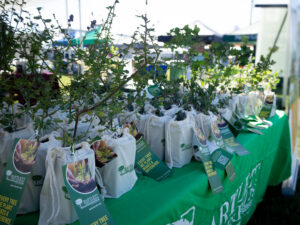Invasive plants are not native to an ecosystem. Further, their introduction results in harm to that ecosystem. Their presence can negatively impact the environment as they spread aggressively and outperform native plants. They can also hurt the local economy, affecting agriculture, outdoor recreation or operation of utilities, to name a few. In some cases, invasive species can even introduce threats to human health like toxins and allergens not previously common in a geographic region. For many property owners, invasive plants can also be a major nuisance. They are often difficult to remove and control, and quickly take over prized landscape plantings and native woodlands.

Depending on your location, there are likely a number of invasive species that have already become established. Each region seems to have a plant that locals know and hate. For example, Japanese knotweed, burning bush and tree of heaven are all well-known, and unloved, invaders.
-

Japanese knotweed (Fallopia japonica) -

Tree of heaven (Ailanthus altissima) -

Winged euonymus, burning bush (Euonymus alatus)
Some invasive plants were introduced accidentally. Others were first planted intentionally, owing to some endearing quality they possess. Once established, however, these species have overtaken ecosystems by outcompeting native flora and have negatively impacted wildlife populations.
Be sure to know what plants are considered invasive in your area. The USDA provides a number of resources and invasive species lists at the National Invasive Species Information Center.
What do do about invasive plants
Some places have instituted programs to control the spread of invasive plants. In fact, many areas now restrict the sale of certain species known to be invasive.
Removing invasive plants on your property is largely dependent on the species. Methods include:
- pulling plants out at the roots manually;
- mowing or trimming to prevent plant growth;
- judicious use of selective herbicides;
- using grazing animals to control plant populations.
It is important to tailor strategies for managing invasive plants to the species, situation and local ecosystem. A multi-faceted approach may be necessary because these plants have an amazing capability to persist and regrow. Local experts, such as a Certified Arborist, can provide good advice.
When an appropriate program is implemented, the results can be astounding. Just know that even when you see short-term results, management of invasive plants often requires a long-term commitment.



